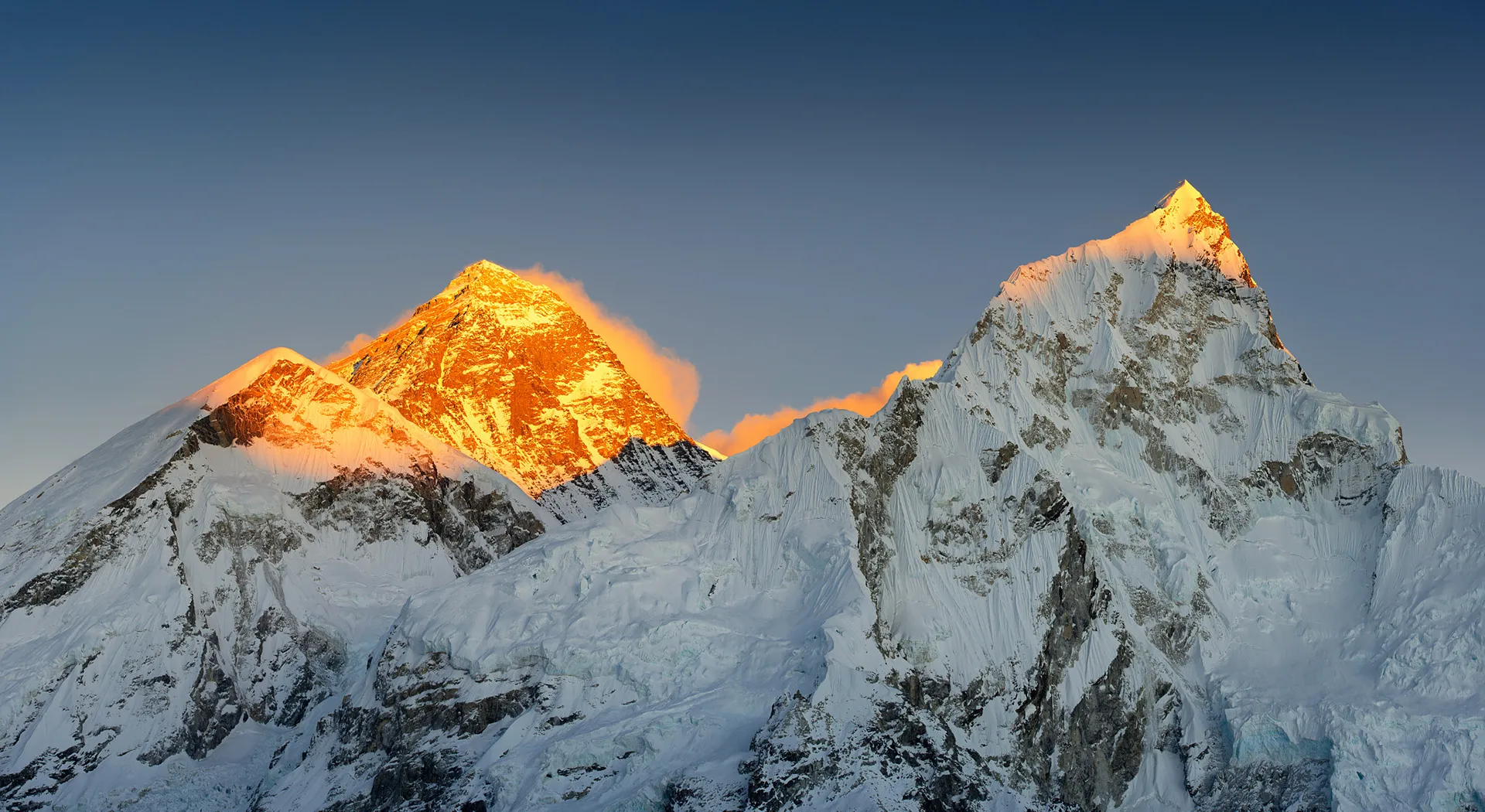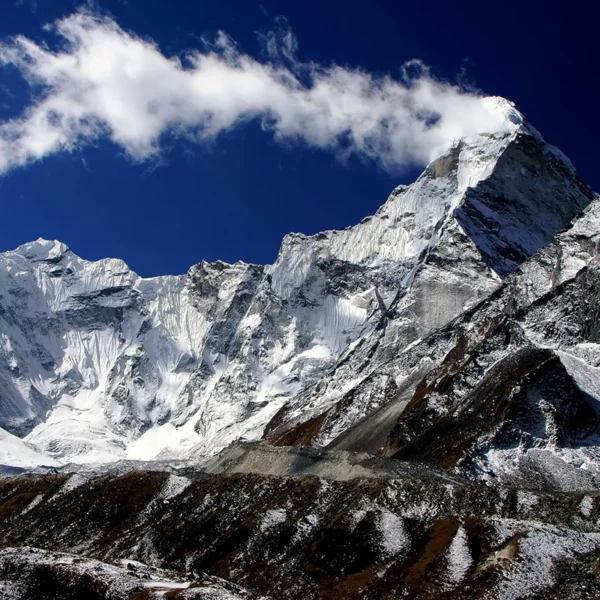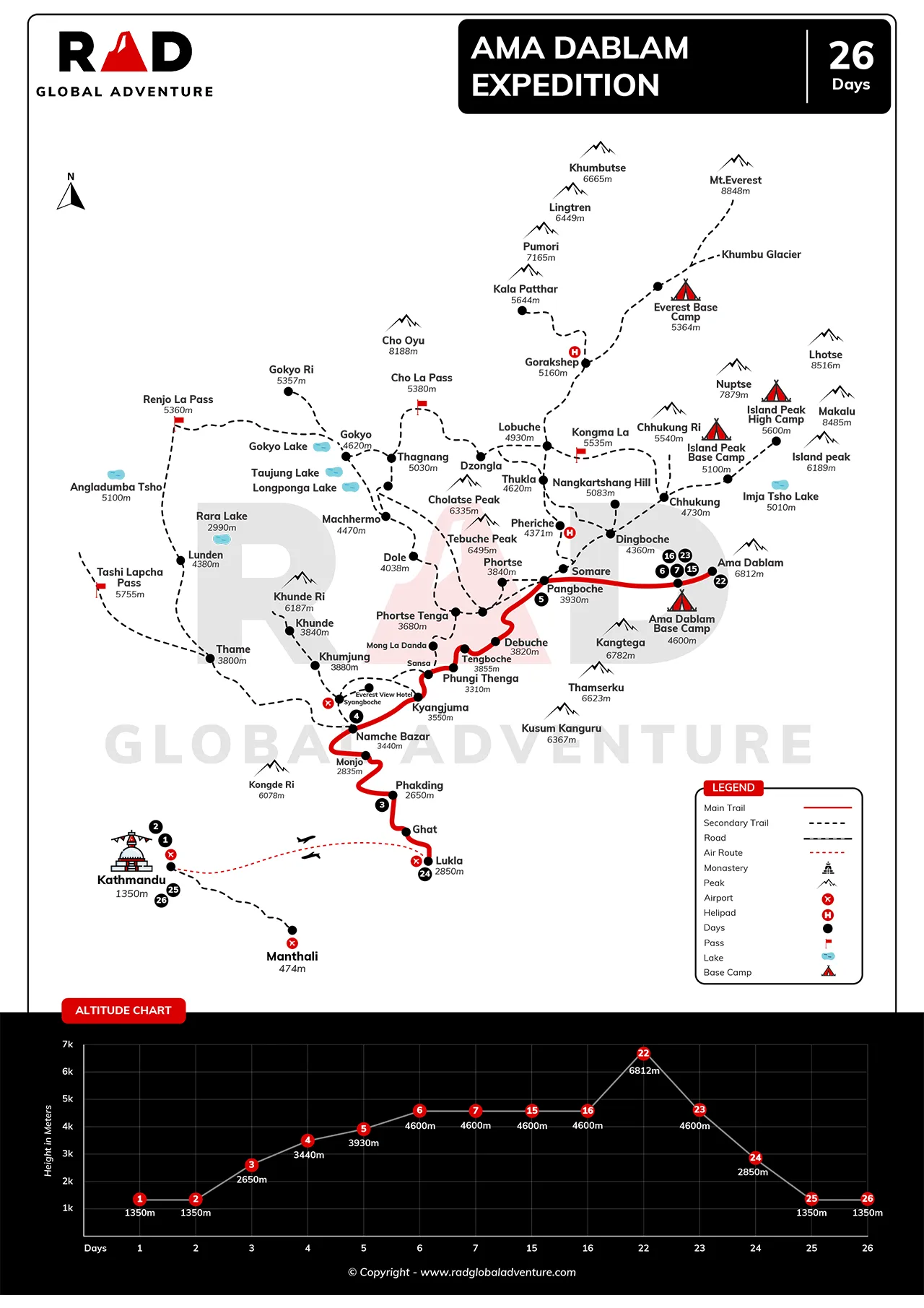Is this trip beginner-friendly?
This Ama Dablam Expedition is not suitable for beginners. Ama Dablam is a technical mountain requiring advanced climbing skills. You need prior experience with high-altitude mountaineering. The summit involves rock climbing, ice climbing, and navigating fixed ropes. We require participants to have completed climbs above 6,000 meters. Physical fitness must be excellent for enduring long days and heavy packs. The altitude presents significant health risks without proper acclimatization.
Our training sessions assume a base level of proficiency. Beginners should consider smaller peaks like Island Peak or Mera Peak first. These climbs build necessary skills for more difficult objectives. We offer training programs for those seeking to advance their experience. The Ama Dablam climb demands mental resilience and technical knowledge. We assess each climber’s background during the application process. Safety is our primary concern for all team members. This expedition suits experienced mountaineers seeking a challenging summit.
Private trip vs Group Joining
Private trips offer complete customization for your expedition. We adjust the itinerary to match your pace and preferences. You receive dedicated guidance from our climbing leaders. This option provides flexibility in scheduling and route selection. Private trips are ideal for families or teams with specific goals. The cost is higher due to personalized services and resources. Group joining involves merging with other climbers on a fixed schedule. This option reduces costs through shared expenses like permits and guides.
Group dynamics can enhance motivation and friendship. The itinerary is standard with set dates and activities. We limit group sizes to ensure safety and attention for all members. Both options include the same core services like permits, meals, and base camp support. Your choice depends on budget, desired social interaction, and need for flexibility. We recommend a private Ama Dablam Expedition for those with time constraints or unique requirements.
Trip Extension
You have options to extend your stay in Nepal after the expedition. We can arrange visits to Chitwan National Park for wildlife viewing. This park offers jungle safaris to see rhinos and tigers. Another popular extension is Pokhara for relaxation and views of the Annapurna range. You can also explore cultural sites in Kathmandu Valley like Patan Durbar Square. These extensions require additional days and fees. We handle all logistics including hotels, transportation, and guides.
Extending your trip allows for recovery after the climb and deeper exploration of Nepal. The best time for extensions is immediately after the expedition before your flight home. We customize extensions based on your interests and available time. This add-on enhances your overall travel experience without the stress of planning.
Solo Climbing Ama Dablam
The concept of a truly independent “solo” climb on the Ama Dablam Expedition is not feasible for regulatory and safety reasons. Expeditions are conducted with professional guides. Climbing Ama Dablam requires being accompanied by a certified guide or joining a guided expedition. The low climber-to-guide ratio ensures safety on the technically challenging route.
This is not a mountain for novice climbers. Required experience includes comfort with exposed terrain, proficiency in using fixed ropes, crampons, and ice axes, and previous high-altitude experience around 6,000 meters. Excellent physical fitness is essential.
Photography and Drone Rules
Using a drone in Nepal, especially in the Everest region, involves a strict and multi-step permitting process. Flying without authorization leads to severe penalties. You must obtain permits from several government bodies, typically the Civil Aviation Authority of Nepal (CAAN), the Ministry of Home Affairs, and the Ministry of Culture, Tourism, and Civil Aviation. For national parks like Sagarmatha, additional permission from the Department of National Parks and Wildlife Conservation is required.
The process can take several weeks with low chances of success. Commercial filming fees are around $1,500, with an additional drone fee of about $350, bringing the total to approximately $1,850. Strict rules include a maximum altitude of a little over a hundred meters, keeping the drone within visual line of sight, and maintaining distance from people, airports, and government buildings. Special care must be taken to avoid disturbing wildlife and the tranquil mountain environment.
Cultural Festivals on the Trail
The Khumbu region has a rich Sherpa culture. While aligning your trek with a specific major festival is challenging due to their lunar calendar, you will experience cultural immersion throughout your journey. Important festivals that might occur during climbing seasons (spring or autumn) include:
- Mani Rimdu: Celebrated at Tengboche Monastery, this festival features colorful masked dances (Cham) and rituals.
- Dashain: A major Hindu festival celebrating the victory of good over evil, marked by family gatherings and feasts (typically September/October).
- Tihar: Also known as Deepawali, the festival of lights, which celebrates the bond between brothers and sisters (usually October/November).
During festival times, there can be high demand for accommodation in villages, so early booking is advisable. Increased local activity may also affect travel routes.
Tips for First-Time Nepal Visitors
You can obtain a tourist visa upon arrival at Kathmandu airport. Have two passport photos and cash in US dollars or BPD ready for the fee. Exchange currency at banks or authorized money changers for the best rates. Credit cards work in major hotels but not in most local shops. Always drink bottled water or use purification tablets. Pack layers for warm days and cold nights, including a rain jacket. Learn simple Nepali greetings like namaste and dhanyabad. Dress modestly by covering shoulders and knees, especially at temples.
Ask before taking photos of people or religious ceremonies. Use taxis with meters or agree on a price beforehand. Book accommodations through reputable sources. Keep a photocopy of your passport separate from the original. Purchase travel insurance that includes emergency evacuation. We recommend carrying a basic first aid kit. Respect local customs by using your right hand for giving and receiving items.
Typical Daily Routine on the Trek
Wake-up calls occur around 6 am each morning. You pack your duffel bag before heading to breakfast. We serve hot tea or coffee followed by a meal like oatmeal or eggs. The trek begins by 7:30 am with a steady pace. You walk for three to four hours before stopping for lunch. Breaks for water and rest happen every hour. Lunch is a hot meal at a tea house along the trail. The afternoon trek lasts two to three hours. You arrive at the overnight stop by 3 pm. Tea and snacks are available upon arrival. You have free time to rest or explore the village. Dinner is served around 7 pm in a common dining area. The guide outlines the next day’s plan after dinner. Lights are usually out by 9 pm for rest.
Mental Preparation & Trekking Mindset
Accept that some discomfort is part of the Ama Dablam Expedition. You will face physical fatigue and changing weather conditions. Focus on achieving small daily goals like reaching the next checkpoint. Practice patience with the slow and steady pace required. Embrace the simple routine of walking and resting. Maintain a positive attitude by acknowledging each day’s progress. Remember that altitude affects individuals differently. Listen to your body’s natural signals and report any issues to your guide.
Develop a personal rhythm that includes time for reflection. Visualize successful moments but prepare for possible delays. Trust in your training and the support of your team. Keep an open perspective towards new experiences. Understand that flexibility is essential when plans shift. Your mental strength will greatly influence your overall experience.




